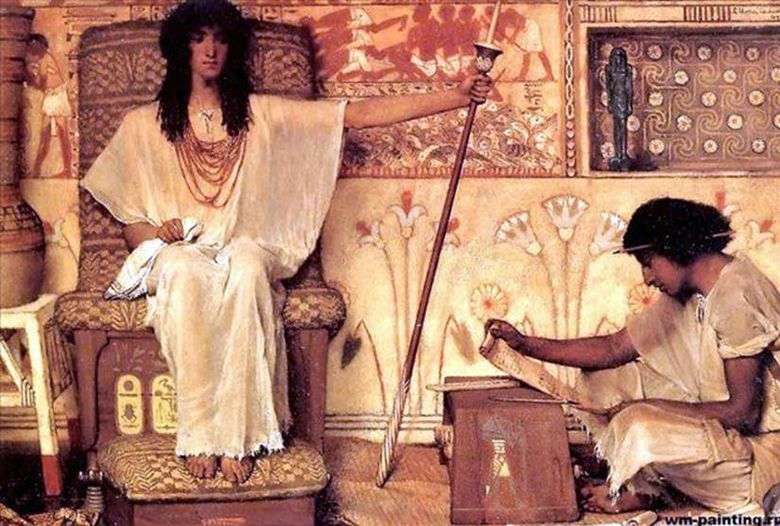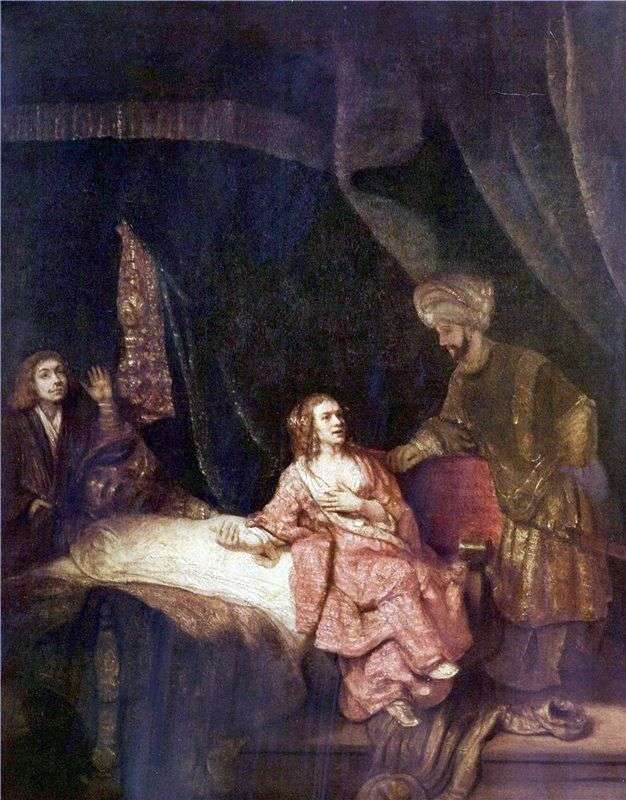
Egypt became one of the first states on the earth with very strong class inequality and power hierarchy. However, the future pharaohs were taught to dominate not only their subjects, but also their own emotions, which is why, judging by the manuscripts, the authorities did not so intoxicated them and circled their heads – they understood that they had not permissiveness but huge responsibility for the fate of thousands of people and for the destiny of the state.
Of course, most often artists of different epochs attracted to themselves pyramids – one of the seven wonders of the world. Household paintings on themes and stories from the history of ancient Egypt are rare. One of the exceptions – the picture of Alma-Tadema Sir Lawrence “Joseph – the overseer of the granaries of the pharaoh.”
It is executed in the style typical for the art of Ancient Egypt, with a predominance of chocolate-yellow shades. Pharaoh is somewhat effeminate, with black curls hanging down to his shoulders. In his right hand he holds something like a scepter – one of the symbols of supreme power. The ruler is dressed in a large white cloth, sitting on a throne with bare feet.
If you look at the facial features, it is not difficult to guess that before us – a fairly young man who has not reached the threshold of the thirties. Still, old age in those distant times was measured quite differently – people rarely lived to be forty.
As for the scribe Joseph, he, in fact, is depicted almost the same age as the pharaoh. He is dressed like a ruler – in white, and also has no shoes on his feet. It is depicted carefully reading a papyrus scroll. In thick black hair, it is not difficult to see a stylo – a scribe’s instrument, pointed at one end. Under clothes is a young man of strong build, physically very gifted by nature. Complement the picture is typical Egyptian frescoes on the walls.
 Favorite poet by Lawrence Alma-Tadema
Favorite poet by Lawrence Alma-Tadema Finding Moses by Lawrence Alma-Tadema
Finding Moses by Lawrence Alma-Tadema Favorable position by Lawrence Alma-tadema
Favorable position by Lawrence Alma-tadema Joseph – surveillant des greniers du pharaon – Lawrence Alma-Tadema
Joseph – surveillant des greniers du pharaon – Lawrence Alma-Tadema Roses Heliogabala by Lawrence Alma-Tadema
Roses Heliogabala by Lawrence Alma-Tadema Joseph – Supervisor de los graneros del faraón – Lawrence Alma-Tadema
Joseph – Supervisor de los graneros del faraón – Lawrence Alma-Tadema Greek woman by Lawrence Alma-Tadema
Greek woman by Lawrence Alma-Tadema Potiphar’s wife accuses Joseph by Rembrandt Harmens Van Rhine
Potiphar’s wife accuses Joseph by Rembrandt Harmens Van Rhine